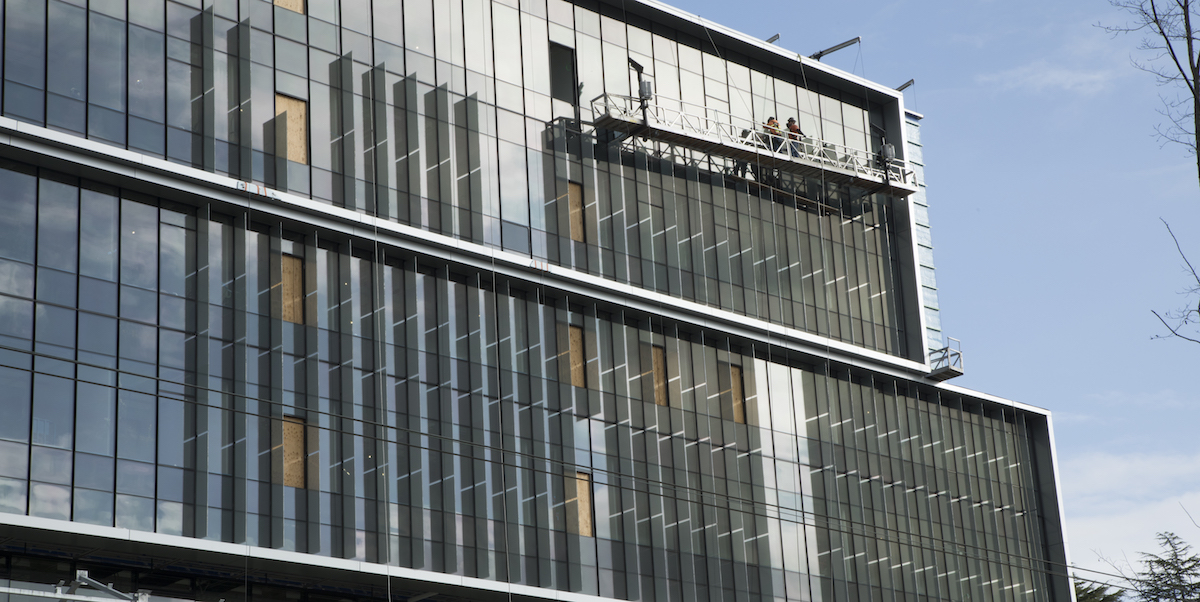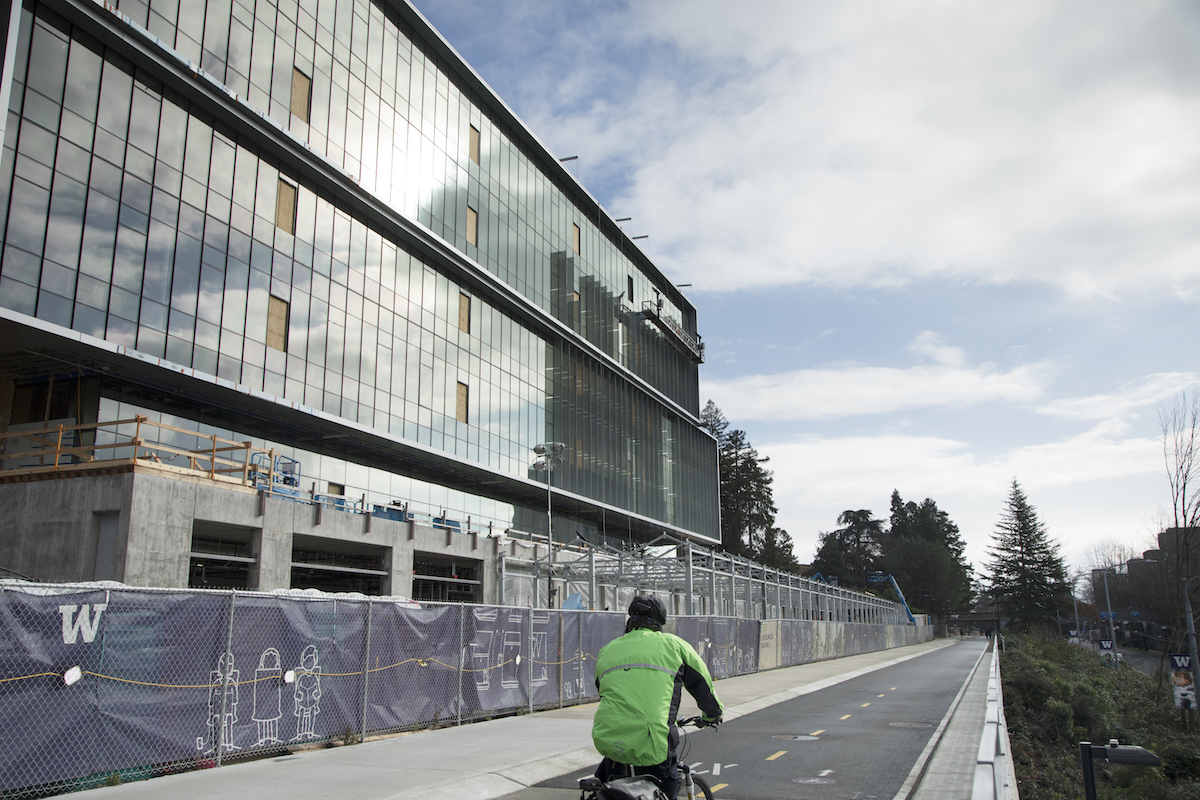
Photos by Rosemary Reyes
The new Life Sciences Building under construction next to the Burke Gilman Trail features floor-to-ceiling windows all along the south side. The windows allow the sun to naturally light the space, but that sunlight also presents a problem.
In the summer, direct sunlight would overheat the building. Instead of relying on air conditioning, the team behind the building’s design found a unique solution.
Vertical glass fins along the side of the building include embedded photovoltaic cells, which will shade the windows to keep the building cool while also generating renewable energy.
"It’s exciting to see the university look at this new technology and new ways to be more sustainable in a unique and creative way,” said Alex Ratcliff, vice president of the student group UW Solar.
UW Solar worked with the Biology Department and the building’s design team to advocate for the solar technology, provide initial feasibility studies and help find additional funding to cover the cost of the solar film.
"They were very excited about this project,” said Steve Majeski, Associate Dean for Research Administration and Infrastructure in the College of Arts & Sciences. “The key thing is they got involved, they came and participated when we were talking about this, and they stepped up and got some money and resources to make it happen.”
The solar power will be generated by a translucent amorphous silicon film laminated in the glass fins. The electricity generated will be enough to power all the lights for the offices in the building.
Other buildings have used the solar film, and other buildings have vertical fins for shade, but the Life Sciences Building’s combination of the two is unique, said project architect Devin Kleiner of Perkins+Will.
"We’re actually producing energy while reducing solar heating,” Kleiner said. “It’s a win-win.”
By reducing heating from the sun, the fins reduce the building’s energy usage and remove the need for large air ducts throughout, allowing the building to feature high 11-foot ceilings.
Originally, the design for the building called for metal fins along the side to provide shade. However, to keep with the open feel of the building design, the team looked at glass fins - which allowed the solar film to be considered as well. UW Solar worked with Perkins+Will on the feasibility study of including the solar energy technology in the fins.
"Although there was a slight cost increase, we worked with grant applications and a few funding sources to make up that extra money, so we made it very feasible and helped design this project,” Ratcliff said.
In addition to the solar fins, UW Solar also received a $150,000 grant from the Campus Sustainability Fund (CSF) last year to help implement a rooftop solar installation on the building. The group is currently looking for matching funds to help make that project a reality.
Utilizing solar energy isn’t the only sustainability feature built into the new Life Sciences Building. The new greenhouse will be irrigated using wastewater from the building’s reverse osmosis/de-ionization (RO/DI) filtration system, recapturing usable water that would otherwise be sent to the sewer system - another project that was possible through a CSF grant.
The building will also have an interactive dashboard display, showcasing the building’s sustainability measures and resource use.
"Part of our mission, along with the university, is to be sustainable,” Majeski said. “So when we can do things in the construction of the building that are within budget, we want to take those steps.
